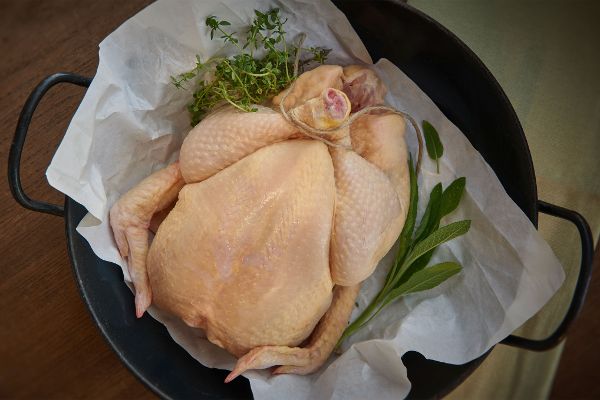Poultry meat production in Austria

Poultry meat production is subject to the highest animal welfare and food standards in Austria.
In 2023, the gross poultry meat production in Austria amounted to about 149,000 tonnes. This corresponded to a degree of self-sufficiency of 73 percent.
“Poultry meat” comprises the following poultry species:
| Gross domestic production in tonnes | Degree of self sufficiency in percent | |
| Chickens | 127,924 | 89 |
| Turkeys | 19,818 | 48 |
| Ducks | 1,148 | 20 |
| Geese | 592 | 28 |
| Total | 139,481 | 73 |
Source: Statistics Austria, supply balances sheets 2023
EU-wide 13,328 thousand tonnes of poultry meat were produced in 2023. In this context, it should be noted that six Member States (MS) produced 73 percent of the total EU production. These Member States are Poland (21 percent), Spain (13 percent), Germany (12 percent), France (11 percent), Italy (10 percent) and the Netherlands (6 percent).
84.2 percent of the poultry meat produced in the European Union (EU) is chicken meat, followed by 12.5 percent turkeys, 2.8 percent ducks and 0.3 percent others (geese, guinea fowl,...).
Animal welfare with domestic fattening poultry means: More space, more light and more air for the animals.
Stocking density is a good indicator for that. Stocking density means how many animals may be kept on one square metre. In the European Union (EU), up to 20 chickens are allowed per one square metre. This corresponds to about 42 kilogrammes per square metre. In Austria, a maximum of 30 kilogrammes per square metre is permitted. This means that around 14 chickens (with a live weight of around 2.1 kilogrammes) may be kept per square metre. These are around six chickens less than the number permitted in the European Union. The animals have 30 percent more space and can therefore move and pursue their natural behaviour in a better way.
The increased animal welfare is even more evident with turkeys. There are currently no legal provisions for turkeys at EU level. In Austria, however, there are! The stocking density for turkeys amounts to a maximum of 40 kilogrammes per square metre in Austria. In some EU Member States, turkeys are produced at almost twice this stocking density.
The requirements for keeping farm animals are regulated in the 1st Animal Husbandry Ordinance of the Federal Ministry of Social Affairs, Health, Care and Consumer Protection (BMSGPK). Domestic poultry can be found in Annex 6.
Quite in contrast to the rest of the world, GMO-free feeding is part of everyday life in Austria and the majority of the states of the European Union (EU). A second important aspect in feeding is the short distances that the feed has to travel. 85 percent of the feed for Austrian fattening chickens originate from local and/or regional production. This means that in Austrian the carbon footprint of the feed is considerably smaller than that of the feed of other animal keepers in the EU and/or in the rest of the world.
In Austria, there is an Austria-wide animal health service for poultry, the Austrian Quality Poultry Association, in German “Österreichische Qualitätsgeflügelvereinigung” (abbreviated “QGV”). All veterinary medicinal products administered to the fattening chickens are recorded in the QGV database. This provides a perfect overview of animal health in Austria.
Worldwide, there are hardly any records of this kind. Even in the EU, such precise records are rarely available. Austria has also succeeded in reducing the use of antibiotics in the fattening poultry sector by 60 percent in the course of the past 8 years! Austria is really a pioneer in this respect, because neither in the EU nor on a global scale has there been such a massive reduction in the consumption of antibiotics.
Furthermore, 100 percent of fattening chickens are kept on family farms in Austria. There are no big corporations as animal keepers.
Further information on Austrian poultry farming is available on the website of Geflügelwirtschaft Österreich.